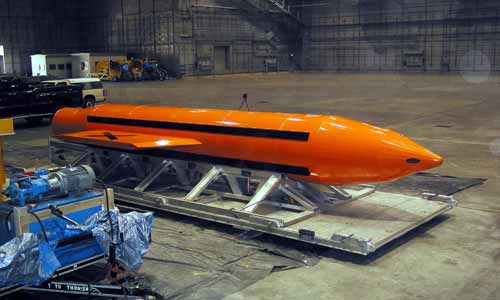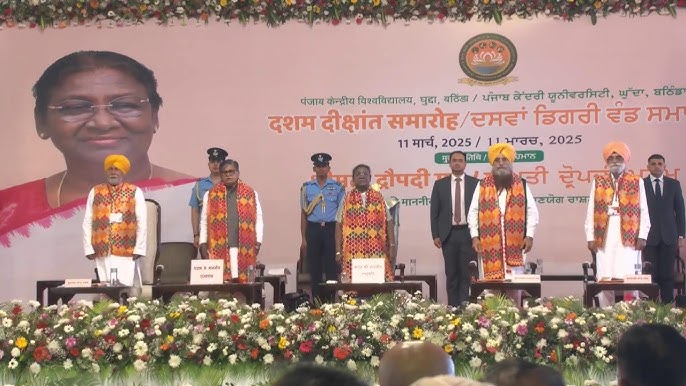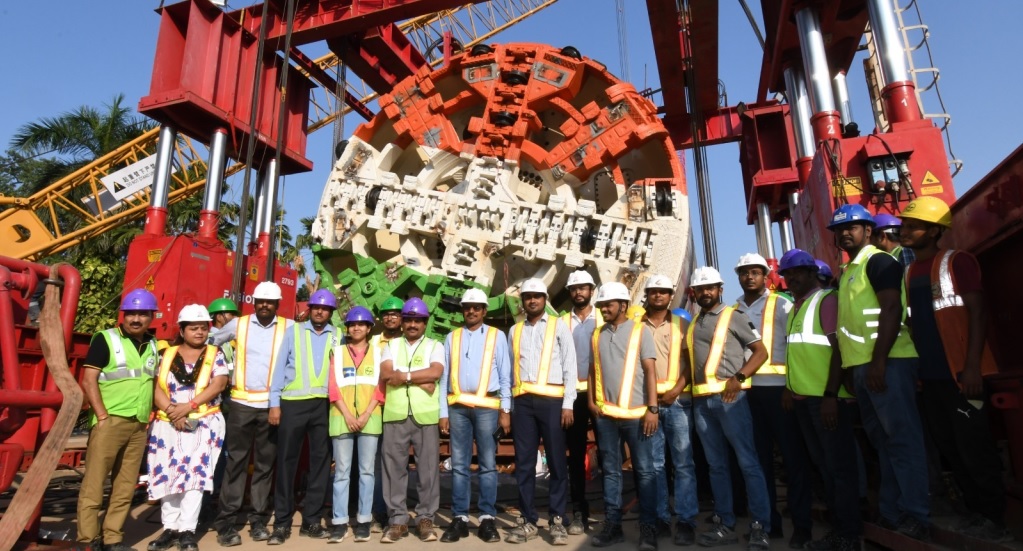World’s biggest bombs: India’s SPICE no match for America’s MOAB or Russian FOAB
Sat 15 Apr 2017, 14:52:22

Less than three months after Donald Trump took over as President, an MC-130 aircraft operated by the United States Air Force Special Operations Command dropped one of the biggest conventional bombs in country’s arsenal in eastern Afghanistan on Thursday.
Deployed by the US military for the first time in combat, the GBU-43 Massive Ordnance Air Blast Bomb (MOAB) is one of the most powerful non-nuclear weapons in the possession of any military worldwide. The 21,000-lb MOAB’s sheer destructive power has earned it the nickname ‘Mother of All Bombs’.
Neither India nor Pakistan nor even China possesses non-nuclear bombs that are in the league of MOAB, developed in the early 2000s. In fact, their stockpile doesn’t come anywhere close to MOAB-like munitions.
The rare strike against Islamic State fighters with a weapon of this size has turned the spotlight on the world’s biggest and largest contemporary non-nuclear bombs, primarily held only by the militaries of Russia and the US.
Here’s a quick look at some of these deadly air-delivered monster munitions whose efficiency and power almost match nuclear weapons, and the smaller bombs that the air forces of India, China and Pakistan hold in their inventories:
Aviation Thermobaric Bomb of Increased Power: Also known as the ‘Father of All Bombs’ (FOAB), it is the Russian answer to the American bomb. Moscow successfully tested the weapon in 2007; four years after the US developed the MOAB. It is reportedly the world’s most powerful non-nuclear bomb, capable of unleashing 44 tons of explosives compared to 11 tons in the GBU-43 MOAB. At 15,650 lb, the FOAB is lighter than the American bomb but the former’s significantly higher blast yield makes it far more lethal.
GBU-43 MOAB: Designed to destroy underground facilities, caves and tunnels, the US had developed the GPS-guided bomb for the 2003 invasion of Iraq but it was never used in combat until Thursday evening. Just like the Russian bomb, the 30-foot MOAB detonates before hitting the ground and causes unthinkable destruction by sending deadly shockwaves up to a distance of over a mile in all directions. The GBU-43 MOAB, however, is not the heaviest conventional munition in the American arsenal.
GBU-57A/B Massive Ordnance Penetrator: Known by its acronym MOP, the 30,000-lb American bomb is perhaps the heaviest conventional weapon in the world. However, the bunker buster bomb’s explosive power doesn’t match that of the MOAB or the FOAB. Manufactured by US defence giant Boeing, the GBU-57A/B MOP is designed to obliterate underground nuclear facilities and deeply buried
enemy targets.
enemy targets.
GBU-28 Hard Target Penetrator: The air forces of Israel and South Korea have the 5,000-lb GBU-28 bunker buster munitions supplied by the US in their inventories. The bombs were deployed by the USAF during Operation Desert Storm to carry out strikes against Iraqi bunkers, military installations and high value strategic targets in 1991. The GBU-28, a variant of the Paveway III bomb, can reportedly blast through six metres of concrete.
GBU-24 Paveway II bombs: The French Air Force’s Rafale omni-role fighters can carry a number of bombs from the US Paveway family of munitions. The heaviest air-to-surface conventional weapon the fighter can be equipped with is the GBU-24 Paveway II 2,000-lb laser-guided bomb.
INDIA
SPICE: The Israel-manufactured SPICE (smart precise impact and cost effective) bomb is the biggest conventional bomb that can be delivered by the Indian Air Force. Manufactured by Israeli firm Rafael Advanced Defence Systems Ltd, the 2000-lb precision guided bombs are used on the French-origin Mirage 2000 fighters.
The IAF’s Jaguar deep-strike penetration aircraft can be fitted with 1,000-lb bombs for destroying the enemy’s ammunition dumps during combat. In one configuration, a Sukhoi-30 MKI fighter can carry 26 bombs of 550-lb class to destroy a concentration of enemy armour and personnel. The fighter can also carry 1,000-lb HSLD (high speed, low drag) bombs to destroy enemy airfields. Indian fighter planes can also drop indigenously produced 1,000-lb bombs fitted with Israel Aircraft Industries-produced Griffin laser-guided systems
CHINA AND PAKISTAN
The People’s Liberation Army Air Force has a variety of conventional bombs ranging in the 500 lb to 3,000-lb class. Most of these general purpose bombs have been developed by the China’s North Industries Corporation. Most of the designs are reportedly based on bombs earlier imported from Russia.
Some of the designs also reportedly draw inspiration from the US Mk 80/82/83/84 bombs. Some other bombs in the Chinese inventory are also suspected to have been copied from Western designs. The conventional bombs with Pakistan Air Force are in the 250 lb to 2,000-lb class, with the design again based on the US Mk 80 series bombs and mated to laser guided systems of American origin. Former IAF vice chief Air Marshal KK Nohwar told on Friday, “India, China and Pakistan largely have a similar stockpile of lighter non-nuclear bombs. It’s nowhere close to the mega bombs that the Russians and the Americans can deploy in combat.”
No Comments For This Post, Be first to write a Comment.
Most viewed from National
Most viewed from World
AIMIM News
Delhi Assembly polls: Owaisi leads Padyatra in Okhla
Feb 01, 2025
We reject this Waqf Amendment Bill: Asaduddin Owaisi
Jan 30, 2025
Latest Urdu News
Most Viewed
May 26, 2020
Do you think Canada-India relations will improve under New PM Mark Carney?
Latest Videos View All
Like Us
Home
About Us
Advertise With Us
All Polls
Epaper Archives
Privacy Policy
Contact Us
Download Etemaad App
© 2025 Etemaad Daily News, All Rights Reserved.


.jpg)
.jpg)














.jpg)
.jpg)
.jpg)
.jpg)
.jpg)
.jpg)
.jpg)

















